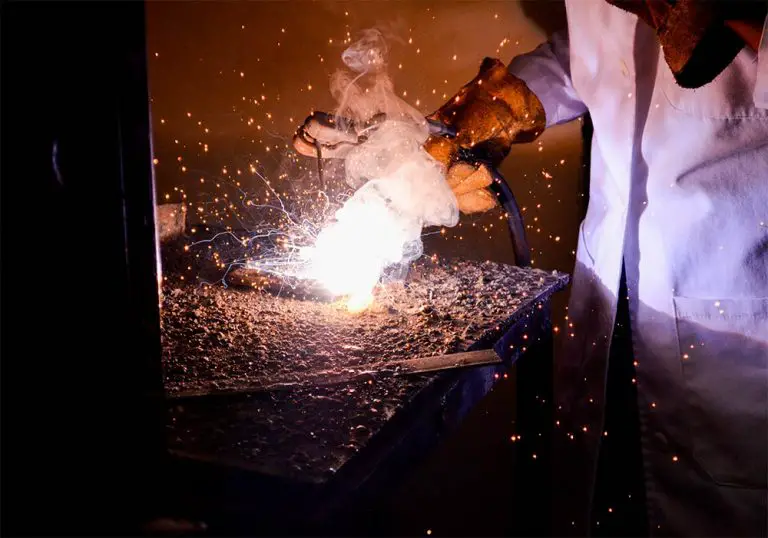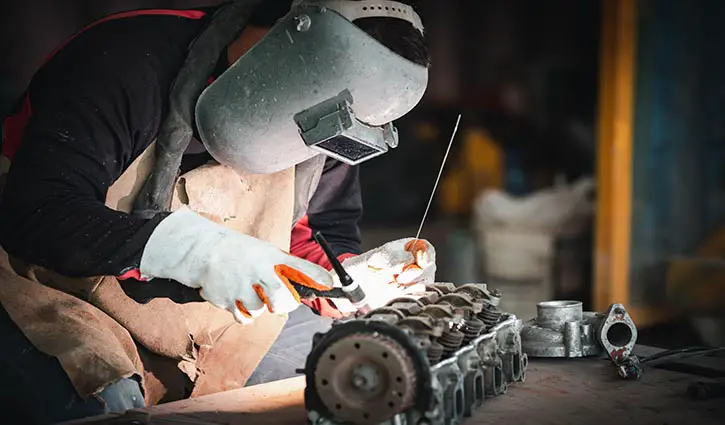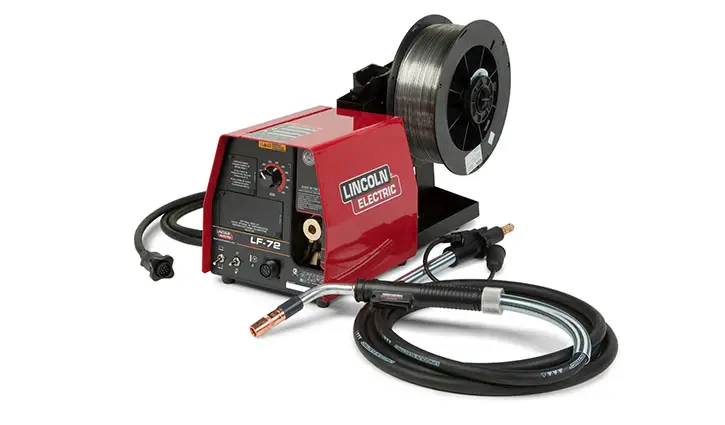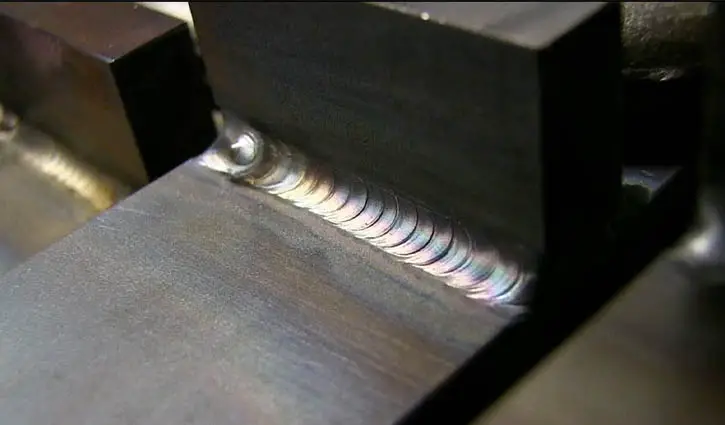ESAB Rebel EMP 215ic vs Miller 215 (Pros, Cons, Similarities, Difference)
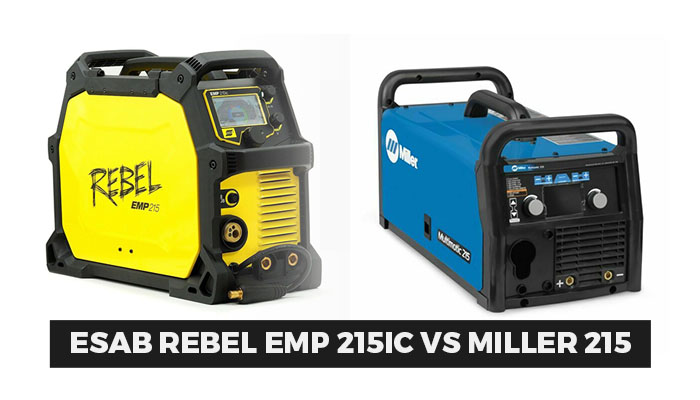
Not many multi-process welders can keep it up to the mark. Still, you can find several models to stand ahead of the others.
ESAB’s 215ic and Miller’s 215 are such two advanced designs. You can have advanced features without exceeding the budget.
Many often find it confusing to choose one from these two. That’s where ESAB Rebel EMP 215ic vs. Miller 215 can help.
Let’s start with the tabulated comparison between the two units right below.
Table of Contents
Comparison Table – ESAB 215ic vs Miller 215
| Feature | Rebel 2159c | Multimatic 215 |
|---|---|---|
| Weight (lbs/kg) | 40/18.2 | 38/17.2 |
| Dimensions (inches) | 23 x 9 x 16 | 12.5 x 11.25 x 20.5 |
| Welding Process | MIG, TIG, Stick, Flux-Cored | MIG, TIG, Stick, Flux-Cored |
| Output Range | 5A – 150A (120V)5A – 240A (230V) | 20A – 150A (120V)20A – 230A (240V) |
| Rated Welding Output(Current/Voltage @ Duty Cycle) | 205A/24.3V @ 25% (MIG)180A/27.2V @ 25% (Stick)180A/17.2V @ 30% (TIG) | 200A/24.0V @ 20% (MIG) 190A/27.6V @ 20% (Stick) 190A/17.6V @ 20% (TIG) |
| Input Power | 120V + 208V/230 V1-Phase, 50Hz/60Hz | 120V + 240V1-Phase, 50Hz/60Hz |
| Wire Feed Speed(inches per minute) | 59 – 476 | 60 – 600 |
| Max Open Circuit Voltage | 68 VDC | Welding Process |
Rebel EMP 215ic vs Multimatic 215
There are significant differences to notice from the side-by-side comparison. But you shouldn’t miss out on the brief details of each welder. Scroll down to explore the overview of the machines individually.
ESAB Rebel EMP 215ic
215ic is superior to other multi-process welders with many advanced features. It enables the flexibility to weld almost anything, anywhere, anytime. You can use either 120V or 230V/208V to power it up.
ESAB promises the best MIG, Flux-Cored, TIG, and Stick welding in its class. The package already includes 6010 electrodes for DC Stick. Meanwhile, the right settings can give you a perfect DC TIG with lift starts.
Exclusive sMIG (smart MIG) tech learns to adapt your welding technique. It delivers stable + repeatable arcs to increase your productivity. Use the five-handle roll cage to carry the lightweight unit anywhere.
Std-sized TFT display features good pixel density for maximum optical clarity. The multi-language screen reveals the spare parts list and the user manual. Operating the unit is easy with the on-demand display.
Miller Multimatic 215
215 has many great features to outmatch other multi-process welders. It enables MIG, Flux-Cored, DC TIG, and DC Stick welding. The package also includes the necessary 6010 electrodes for the Stick process.
A multi-voltage plug (MVP) supports 120V and 240V power input. And the featured Auto-Set Elite tech allows simple fine-tuning of settings. It eases the entire welding operation on different materials.
The exclusive angled drive system comes with a Quick Select Drive roll. You can enjoy quick wire changes and smooth feeding. Also, its Smooth Start tech initiates no-spatter, but consistent MIG process starts.
No need to use a switch with its automated gun detecting system. Intuitive LCD helps with simple, easy, and instant adjustment. And it includes an on-demand cooling fan with thermal protection.
Read More: MIG Welding Aluminum Without Spool Gun
ESAB Rebel EMP 215ic vs. Miller 215: Similarities
Design: Either one features a robust frame to cover the internal mechanism. Outside elements can’t get through the metal construction. The system remains intact to hold and keep delivering the amperage.
Input: The input rating is almost similar to one another. Either can run on two different std voltage ratings for household and commercial uses. But 215ic rates 208V/230V against 215’s 240V.
Process: You can achieve perfect DC welding output from either device. MIG, Flux-Cored, DC TIG, and DC Stick are available on both. Also, general-purpose 6010 electrodes for the Stick process are included.
Metals: Mild steel, aluminum, stainless steel – you can weld these metals. However, the thickness differs from one to the other. But both welders are capable of delivering optimal precision anywhere.
Display: Either machine includes a color interface to assist the operation. The mid-sized LCD lets you know the crucial facts and parameters. The bright screen allows you to adjust the settings with ease.
All-in-1: Both devices come in a complete package to enable your operation. You may require some extra purchases for special cases. Otherwise, everything is present in the box to ensure easy setup.
ESAB Rebel EMP 215ic vs. Miller 215: Differences
Techs: The most noteworthy differences lie in the featured techs. 215ic holds TFT screen, smart MIG (sMIG), and lift TIG. And 215 features Auto-Set Elite, Spool Gun Detect, Quick Select, and angled drive.
Plug: Supply plug in 215ic is rated for 230V input only. You’re to use an adapter to make it work with 120V. However, the supplied plug-in 215 is a multi-voltage plug (MVP), suitable for 120V and 240V.
Output: Current output is notably different from one another. 215ic’s amp range is wider with a 5A – 240A rating under 230V. But 215 falls slightly short in this section with a 20A – 230A output range.
Speed: however, 215 stands superior to 215ic in terms of wire feed speed. A 60IPM – 600IPM range is sufficient for the 215’s action. 215ic slightly lacks behind with a reasonable 59IPM – 476IPM range.
Safety: Protective features are available in either machine. 215ic holds the IP23S protection class in this context. But 215 clearly outruns the other with an on-demand cooling and thermal safety system.
Frequently Asked Questions
The standard operating duty cycle in ESAB and Miller is 40%.
Miller is strictly an American brand, but ESAB isn’t pure American.
The maximum welding thickness on ESAB and Miller is 3/8”.
Wrapping Up
ESAB 215ic stands superior to Miller 215 in multiple aspects. However, in most cases, Miller’s 215 seems to outrun ESAB’s 215ic.
Advanced features in a perfect combo make Miller Multimatic 215 the preferable one.
Still, you don’t have to discard Rebel 215ic for its great performance. Choose the right one based on your needs and budget.

